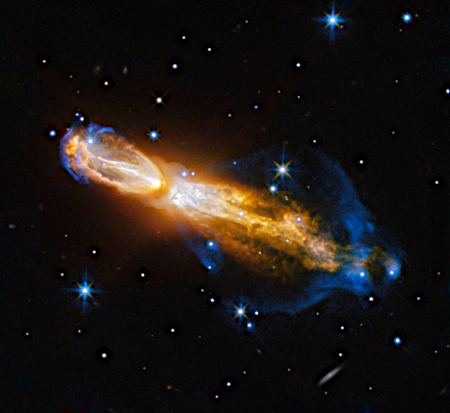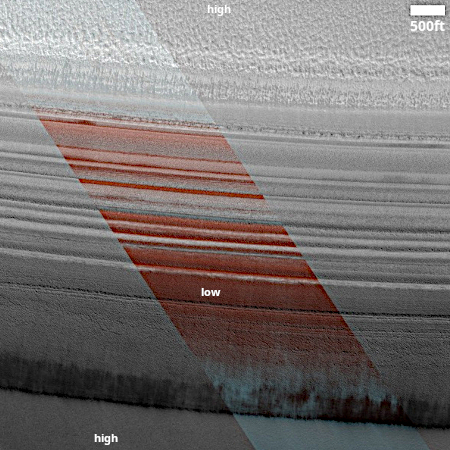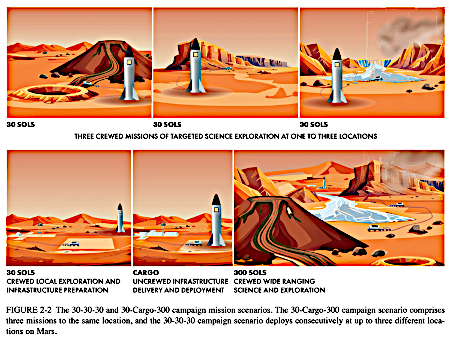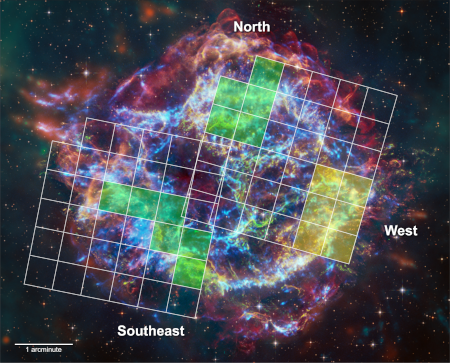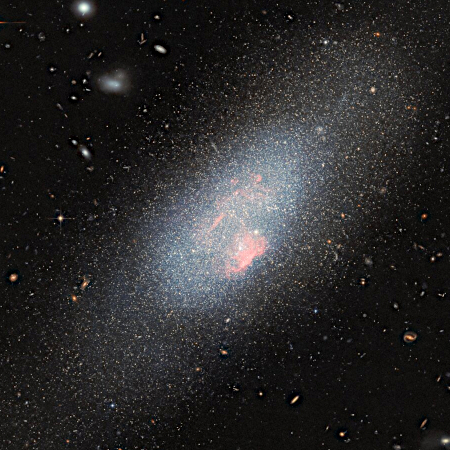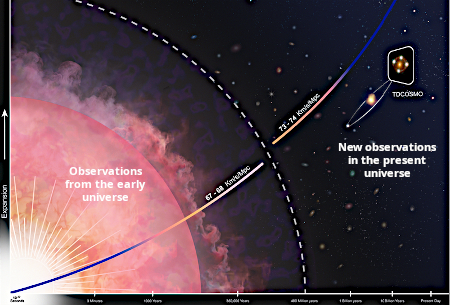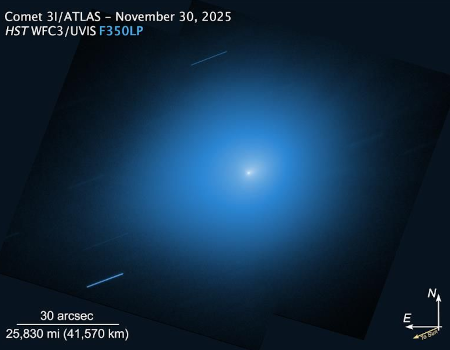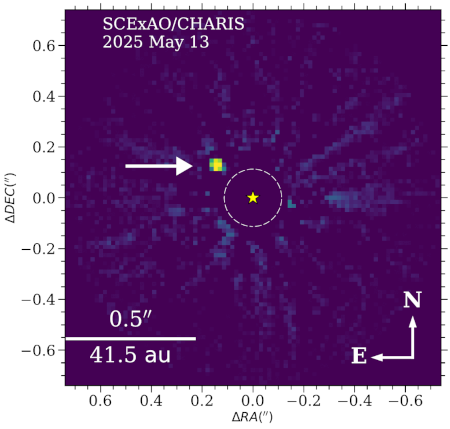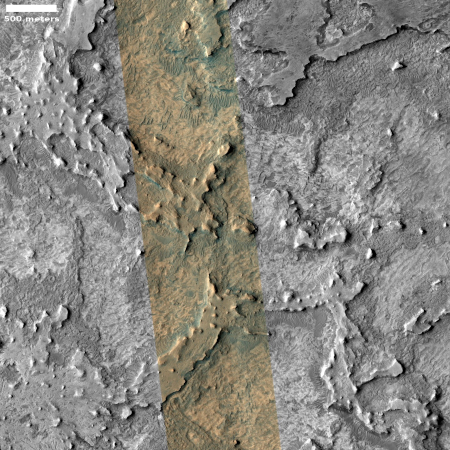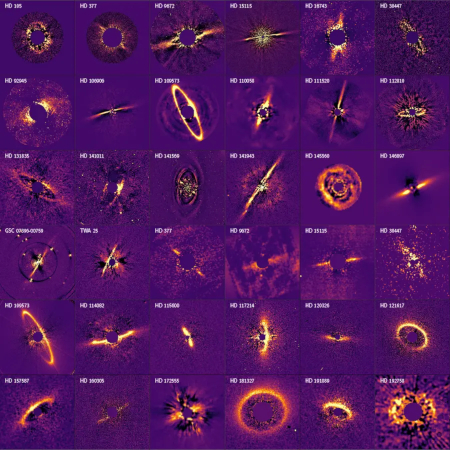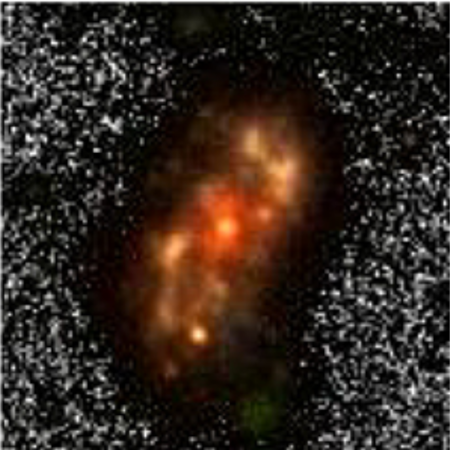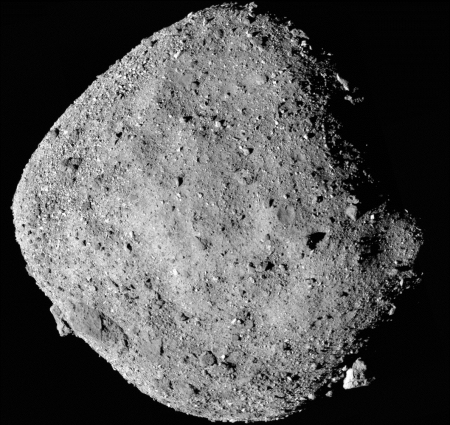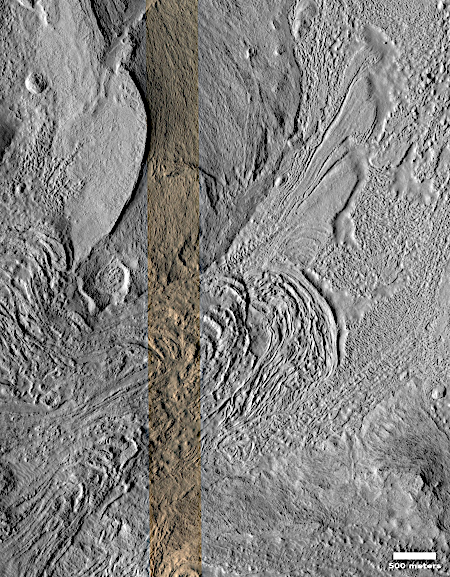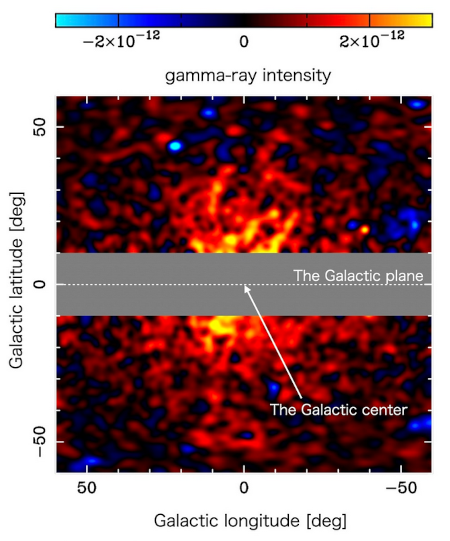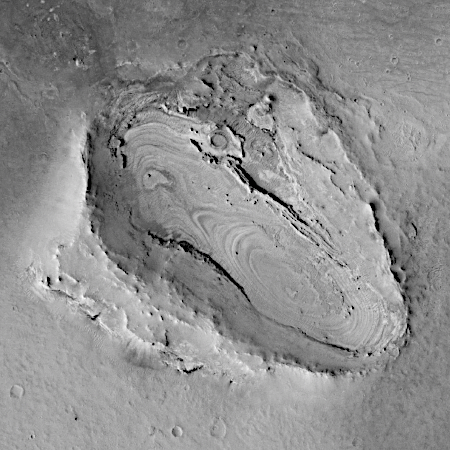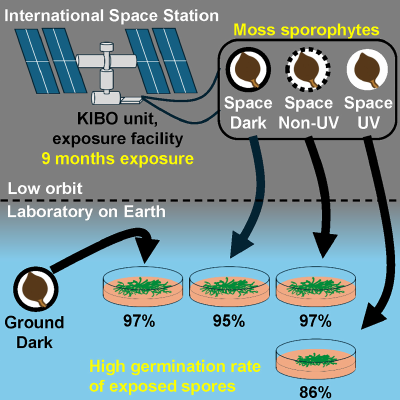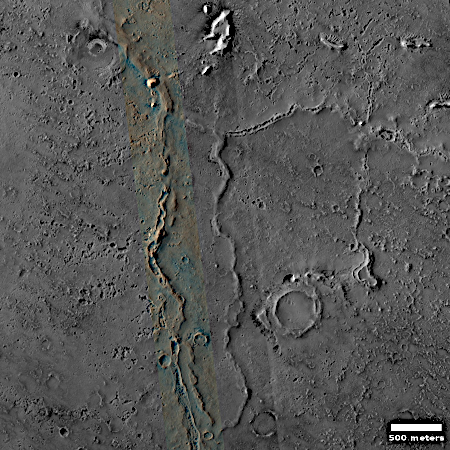The beginnings of a planetary nebula
Cool image time! The picture to the right, reduced and sharpened to post here, was taken by the Hubble Space Telescope back in 2017 but released this week by NASA’s PR department. It shows what astronomers have nicknamed the Calabash Nebula. From the Wikipedia page:
The Calabash Nebula, also known as the Rotten Egg Nebula or by its technical name OH 231.84 +4.22, is a protoplanetary nebula (PPN) 1.4 light years (13 Pm) long and located some 5,000 light years (47 Em) from Earth in the constellation Puppis. The name “Calabash Nebula” was first proposed in 1989 in an early paper on its expected nebular dynamics, based on the nebula’s appearance.[5] The Calabash is almost certainly a member of the open cluster Messier 46, as it has the same distance, radial velocity, and proper motion.[6] The central star is QX Puppis, a binary composed of a very cool Mira variable and an A-type main-sequence star.
The star in the center is an ancient red giant that is in the initial stages of dying. As it does so it periodically erupts, sending out jets of material from its poles. The result is this elongated shape. According to the release, “the gas shown in yellow is moving close to a million kilometers an hour.”
Over the next few thousand years these eruptions will shape the planetary nebula. Since the central star is actually a binary, those two stars will likely act like the blades in a mixer, adding more interesting forms to the material as it is shot out to form this nebula.
Cool image time! The picture to the right, reduced and sharpened to post here, was taken by the Hubble Space Telescope back in 2017 but released this week by NASA’s PR department. It shows what astronomers have nicknamed the Calabash Nebula. From the Wikipedia page:
The Calabash Nebula, also known as the Rotten Egg Nebula or by its technical name OH 231.84 +4.22, is a protoplanetary nebula (PPN) 1.4 light years (13 Pm) long and located some 5,000 light years (47 Em) from Earth in the constellation Puppis. The name “Calabash Nebula” was first proposed in 1989 in an early paper on its expected nebular dynamics, based on the nebula’s appearance.[5] The Calabash is almost certainly a member of the open cluster Messier 46, as it has the same distance, radial velocity, and proper motion.[6] The central star is QX Puppis, a binary composed of a very cool Mira variable and an A-type main-sequence star.
The star in the center is an ancient red giant that is in the initial stages of dying. As it does so it periodically erupts, sending out jets of material from its poles. The result is this elongated shape. According to the release, “the gas shown in yellow is moving close to a million kilometers an hour.”
Over the next few thousand years these eruptions will shape the planetary nebula. Since the central star is actually a binary, those two stars will likely act like the blades in a mixer, adding more interesting forms to the material as it is shot out to form this nebula.

